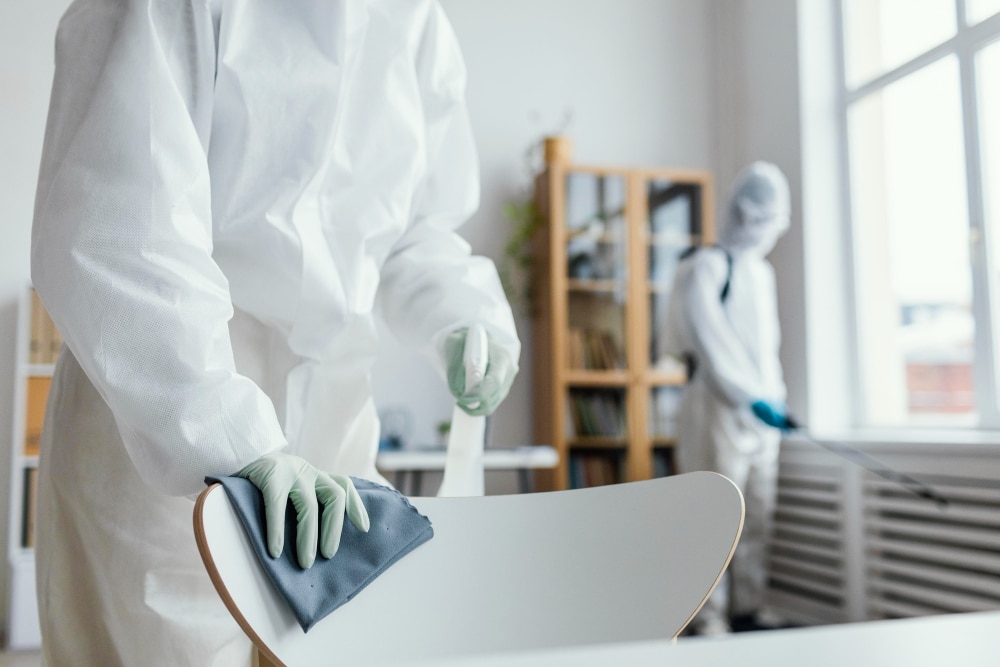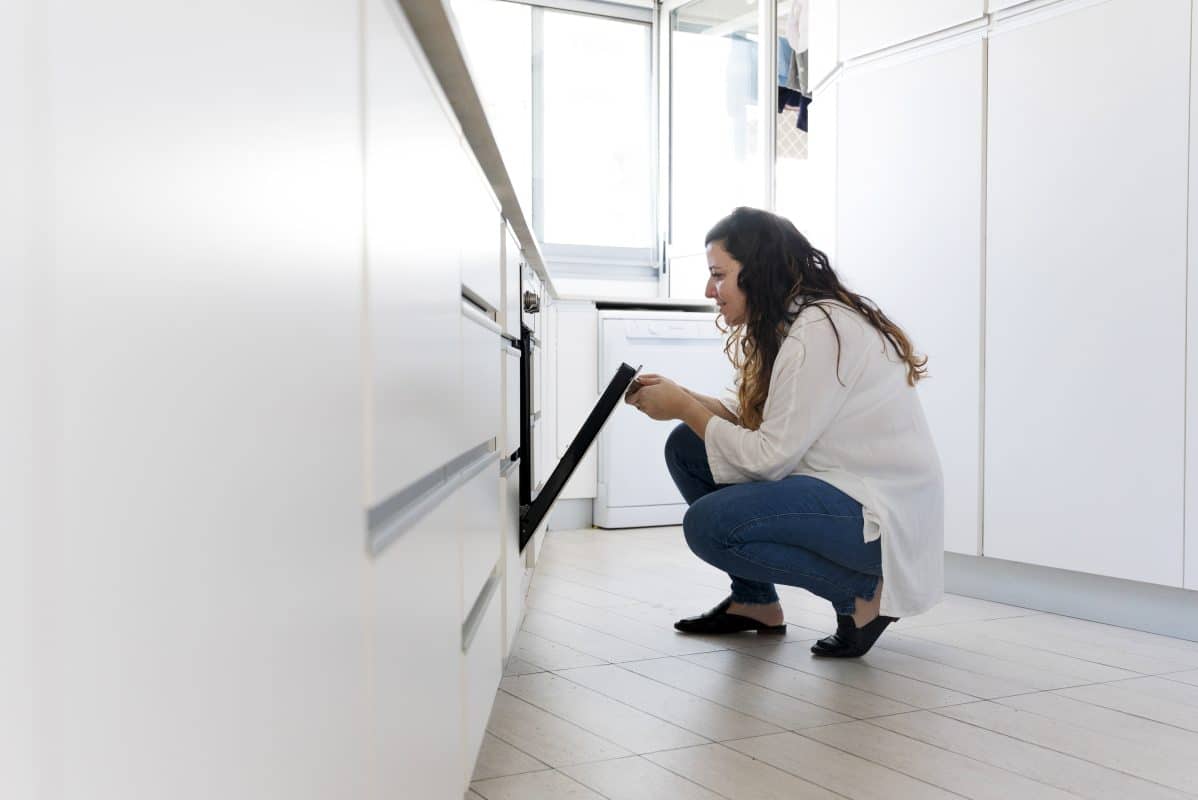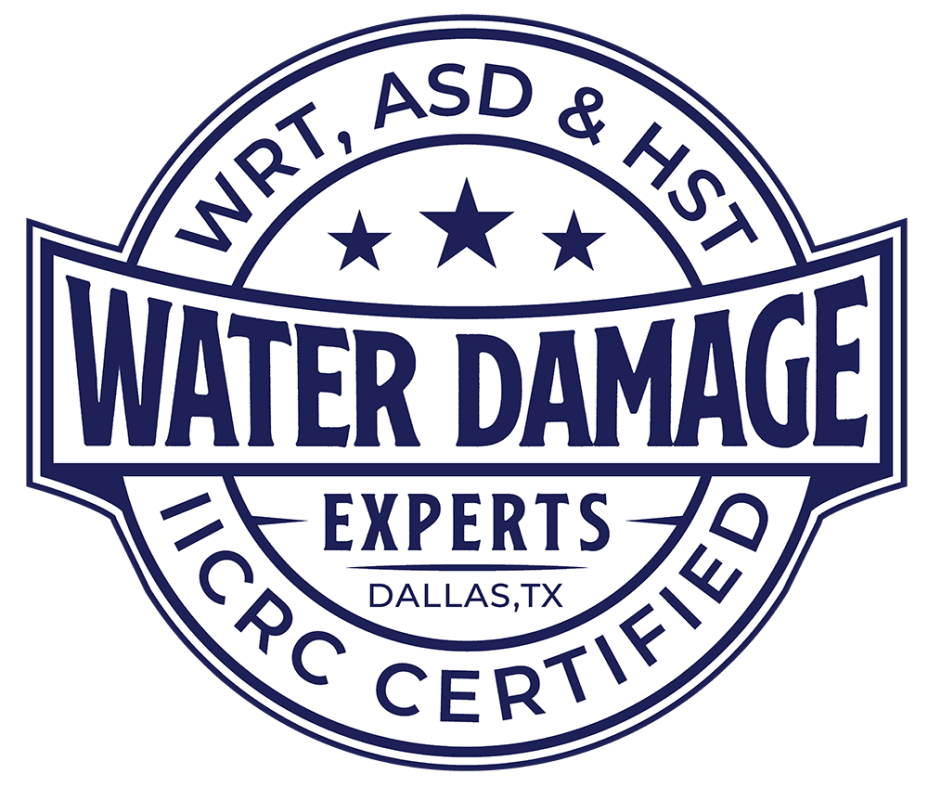Are you tired of battling the relentless invasion of white mold in your home? Look no further – the ultimate white mold survival guide is here to help you defeat the fungus and restore your home to its former glory. From prevention to eradication, we have all the tips and tricks you need to reclaim your space.
White mold is not only unsightly, but it can also pose serious health risks to you and your family. This guide will educate you on the causes and signs of white mold, empowering you to identify and address the problem promptly. We’ll uncover the most effective treatment methods and provide step-by-step instructions for safely removing the mold from your home.
But that’s not all – our guide goes beyond just elimination. We’ll also share expert advice on how to prevent future mold growth, ensuring a mold-free environment for years to come. With our easy-to-follow strategies and practical solutions, you’ll regain peace of mind and enjoy a healthier, happier home.
Don’t let white mold win the battle. Join us as we embark on a mission to conquer this fungus once and for all.
Understanding white mold: What is it and how does it spread
White mold, also known as Sclerotinia, is a type of fungus that can grow on various surfaces in your home. It thrives in damp and humid environments, making areas such as bathrooms, basements, and kitchens particularly susceptible. The mold appears as white or grayish patches, often with a fuzzy or powdery texture.
One of the primary factors contributing to white mold growth is excessive moisture. Whether it’s a leaking pipe, high humidity, or poor ventilation, moisture provides an ideal breeding ground for the fungus. Additionally, organic materials like wood, paper, and fabric can serve as food sources for white mold, further promoting its growth.
White mold spreads through the release of tiny spores into the air. These spores can travel through your home via air currents, HVAC systems, or even by attaching themselves to your clothing or pets. Once the spores find a suitable environment, they settle and begin to colonize, leading to the formation of new mold patches.
Preventing the spread of white mold is crucial to avoid further contamination. Regularly inspecting and maintaining your home’s plumbing, ensuring proper ventilation, and promptly addressing any leaks or water damage can significantly reduce the risk of mold growth.
Signs and symptoms of white mold in your home
Detecting white mold early is essential to prevent it from spreading and causing extensive damage. Familiarizing yourself with the signs and symptoms can help you identify a potential mold problem in your home.
One of the most apparent signs of white mold is the presence of white or grayish patches on surfaces. These patches may have a fuzzy or powdery appearance, resembling cotton or fluff. Keep an eye out for these patches on walls, ceilings, floors, furniture, and even clothing.
A musty or earthy odor is another telltale sign of mold growth. If you notice an unpleasant smell in certain areas of your home, it could indicate the presence of white mold. Pay close attention to areas with poor ventilation or known moisture issues.
White mold can also cause discoloration or staining on materials it affects. Look for any yellowing, browning, or dark spots on walls, ceilings, or fabrics. These stains are often a result of the mold’s digestive enzymes breaking down organic matter.
Additionally, individuals who are sensitive to mold may experience allergic reactions or respiratory issues when exposed to white mold spores. Symptoms can include sneezing, coughing, itchy or watery eyes, nasal congestion, and even asthma attacks. If you or your family members consistently experience these symptoms at home but not elsewhere, it could be a sign of white mold presence.

The dangers of white mold: Health risks and structural damage
White mold not only poses a threat to the aesthetics of your home but also to your health and the structural integrity of your property. Understanding the potential dangers associated with white mold is crucial for taking appropriate action.
Exposure to white mold spores can trigger allergic reactions in susceptible individuals. These reactions can range from mild symptoms like sneezing and itching to more severe respiratory issues and asthma attacks. Prolonged exposure to mold spores may also lead to the development of mold-related illnesses, such as hypersensitivity pneumonitis or fungal infections.
In addition to health risks, white mold can cause structural damage to your home. As the fungus grows and spreads, it feeds on organic materials, weakening them over time. This can result in the deterioration of wood, drywall, insulation, and other building materials. If left unaddressed, the structural integrity of your home could be compromised, leading to costly repairs.
It’s important to note that white mold can be an indicator of underlying moisture issues or water damage. If the source of the moisture is not identified and resolved, the mold problem is likely to persist, increasing the risk of further damage to your property.
Preventing white mold growth in your home
Prevention is key when it comes to white mold. By implementing a few proactive measures, you can significantly reduce the chances of mold growth in your home and create a healthier living environment.
Maintaining proper ventilation is essential to control humidity levels and prevent moisture buildup. Ensure that your bathrooms, kitchens, and laundry areas are equipped with exhaust fans that vent outside. Regularly clean and inspect these fans to ensure optimal functionality.
Addressing leaks and water damage promptly is crucial in preventing mold growth. Regularly check your plumbing for any leaks or drips, and repair them immediately. If you notice any signs of water damage, such as stains or discoloration, investigate the source and fix the underlying issue.
Controlling indoor humidity levels is another effective preventive measure. Keep your home’s relative humidity below 50% to inhibit mold growth. You can use dehumidifiers in damp areas or invest in HVAC systems with built-in humidity control features.
Proper insulation and moisture barriers can also help prevent condensation and moisture buildup. Insulate your walls, floors, and ceilings to reduce the likelihood of moisture seeping into your home. Additionally, consider installing vapor barriers in crawl spaces or basements to prevent moisture from entering through the ground.
Regularly cleaning and maintaining your home can also deter mold growth. Dust and vacuum regularly, paying extra attention to areas prone to moisture, such as bathrooms and kitchens. Wipe down surfaces with mildew-resistant cleaners and ensure proper air circulation during and after cleaning.
In conclusion, white mold can be a persistent and concerning issue in your home. However, armed with the knowledge and strategies provided in this ultimate white mold survival guide, you can take control and defeat the fungus. From understanding its causes and signs to implementing preventive measures and effectively eliminating the mold, you now have the tools to restore your home to a mold-free state.

Identifying and treating white mold: DIY methods and professional help
White mold is a common problem that homeowners face, but many are unaware of its presence until it becomes a major issue. Identifying white mold is the first step in addressing the problem effectively. It typically appears as a powdery, white growth on surfaces such as walls, ceilings, and even furniture. However, it can also be mistaken for efflorescence, a crystalline deposit caused by water seepage.
When it comes to treating white mold, there are both DIY methods and professional help available. If the affected area is relatively small and manageable, you can attempt to tackle it yourself. Start by wearing protective gear such as gloves, goggles, and a face mask to minimize your exposure to mold spores. Next, isolate the area by closing off vents and doors to prevent the spread of spores. You can then remove the mold using a mixture of water and detergent or a specialized mold cleaner. Scrub the affected surface gently and ensure that it dries completely. Finally, dispose of any contaminated materials, such as carpets or curtains, that cannot be salvaged.
However, for larger areas or severe cases of white mold, it is advisable to seek professional help. Mold remediation specialists have the expertise and equipment to handle extensive mold infestations safely and effectively. They will assess the extent of the problem, identify the source of moisture that is fueling mold growth, and devise a comprehensive plan to eliminate the mold and prevent its return. While professional assistance may come at a cost, it is a worthwhile investment to ensure the complete eradication of white mold from your home.
Cleaning up after white mold: Steps to take for restoration
Once you have successfully eliminated the white mold from your home, it is crucial to take the necessary steps to clean up and restore the affected areas. This will not only help in preventing a recurrence but also ensure a healthy living environment for you and your family.
Start the restoration process by thoroughly cleaning the surfaces that were affected by white mold. Use a vacuum cleaner equipped with a HEPA filter to remove any loose mold spores from carpets, upholstery, and other soft materials. Wipe down hard surfaces with a mixture of water and detergent or a mild bleach solution to disinfect and remove any remaining traces of mold. Be sure to follow the manufacturer’s instructions and wear protective gear when using bleach.
Next, assess the extent of any structural damage caused by white mold. If the mold has penetrated porous materials such as drywall or wood, it may be necessary to remove and replace these affected areas. This will prevent any hidden mold growth and ensure that your home is free from the risk of future infestations. It is essential to consult with a professional contractor or mold remediation specialist to assess the damage accurately and perform any necessary repairs.
After addressing the immediate restoration needs, focus on preventing future mold growth. Identify and fix any sources of moisture that contributed to the mold problem in the first place. Common culprits include leaky pipes, inadequate ventilation, and excessive humidity. Ensure that your home is well-ventilated, especially in areas prone to moisture, such as bathrooms and basements. Consider using dehumidifiers or installing exhaust fans to remove excess moisture from the air. Regularly inspect your plumbing system for any leaks or water damage and promptly address any issues that arise.

Restoring your home after white mold: Repairing and preventing future growth
Restoring your home after a white mold infestation is not just about repairing the damage caused but also about taking proactive steps to prevent future mold growth. Here are some key strategies to consider:
- Inspect and repair: Regularly inspect your home for any signs of leaks or water damage. Address any issues promptly, including fixing leaky pipes or roofs, repairing cracks in the foundation, and sealing windows and doors to prevent water infiltration.
- Improve ventilation: Proper ventilation is essential in preventing mold growth. Ensure that your home has adequate airflow by opening windows, using exhaust fans in bathrooms and kitchens, and installing vents in high-moisture areas such as basements and attics.
- Control humidity: High humidity levels create an ideal environment for mold to thrive. Use dehumidifiers in areas prone to excess moisture, such as basements or laundry rooms. Maintain indoor humidity levels between 30% and 50% to inhibit mold growth.
- Keep surfaces dry: Wipe down surfaces regularly, especially in moisture-prone areas, to prevent the accumulation of moisture and the growth of mold. Pay attention to areas such as bathrooms, kitchens, and laundry rooms where water is frequently used.
- Monitor indoor plants: Indoor plants can contribute to excess moisture and mold growth if not properly maintained. Avoid overwatering and ensure proper drainage for potted plants. Wipe down leaves regularly to prevent the buildup of mold spores.
By implementing these preventive measures, you can significantly reduce the risk of future white mold infestations and maintain a healthy home environment for you and your family.
Common misconceptions about white mold
White mold is a persistent problem that many homeowners face. However, there are several common misconceptions about white mold that can hinder effective treatment and prevention. It’s important to dispel these myths and understand the true nature of white mold to successfully combat it.
1. White mold is harmless
Contrary to popular belief, white mold is not harmless. While not all types of white mold are toxic, they can still cause allergic reactions, respiratory issues, and other health problems. It’s essential to take white mold seriously and address it promptly to protect your health and the well-being of your family.
2. White mold only grows in damp areas
While it’s true that white mold thrives in moist environments, it can also grow in dry areas with high humidity levels. Basements, bathrooms, and kitchens are common breeding grounds for white mold due to their increased moisture levels. However, any area of your home that has poor ventilation or is prone to condensation can become a suitable environment for white mold growth.
3. Bleach is an effective solution for white mold
Using bleach to treat white mold is a common misconception. While bleach may kill the visible mold on the surface, it doesn’t penetrate deep into porous materials where the mold roots may be thriving. Additionally, the moisture in bleach can actually promote further mold growth. It’s crucial to use appropriate mold removal products and techniques to effectively eliminate white mold from your home.

